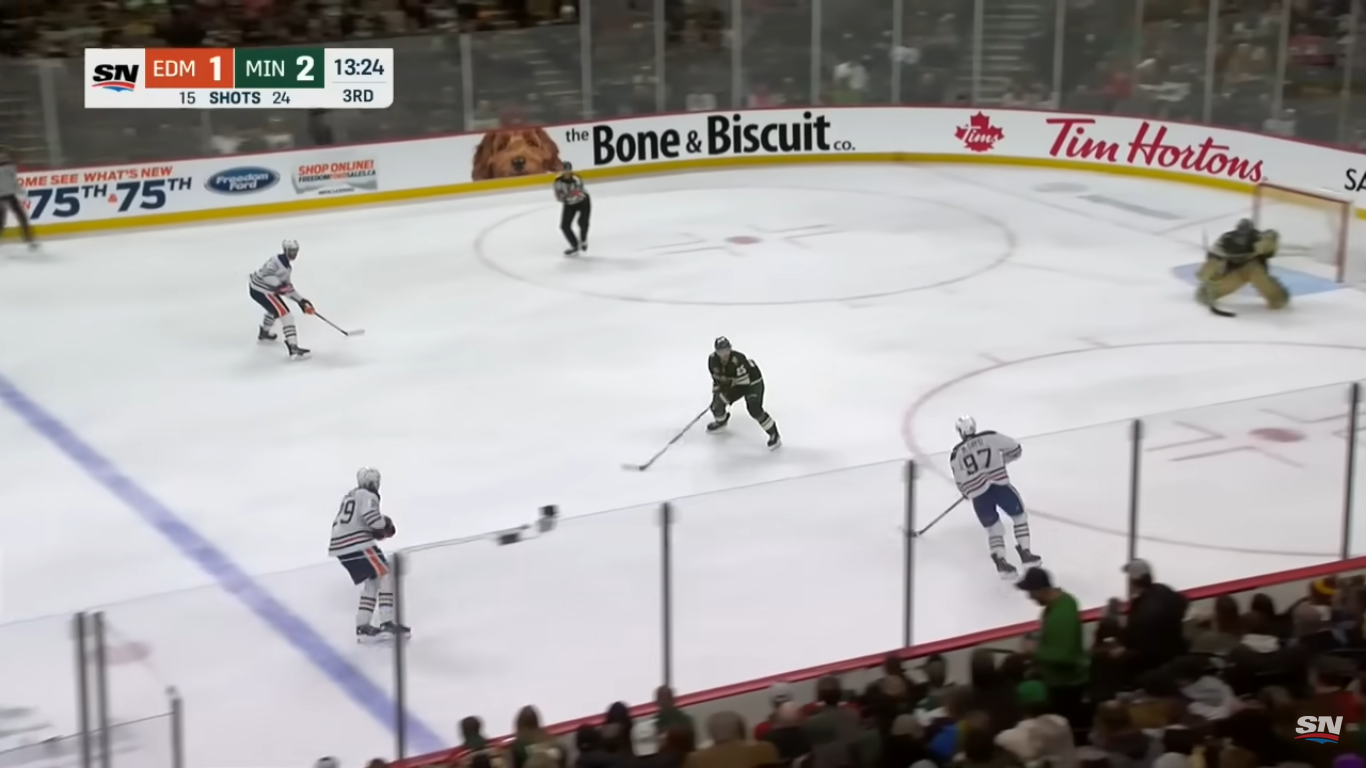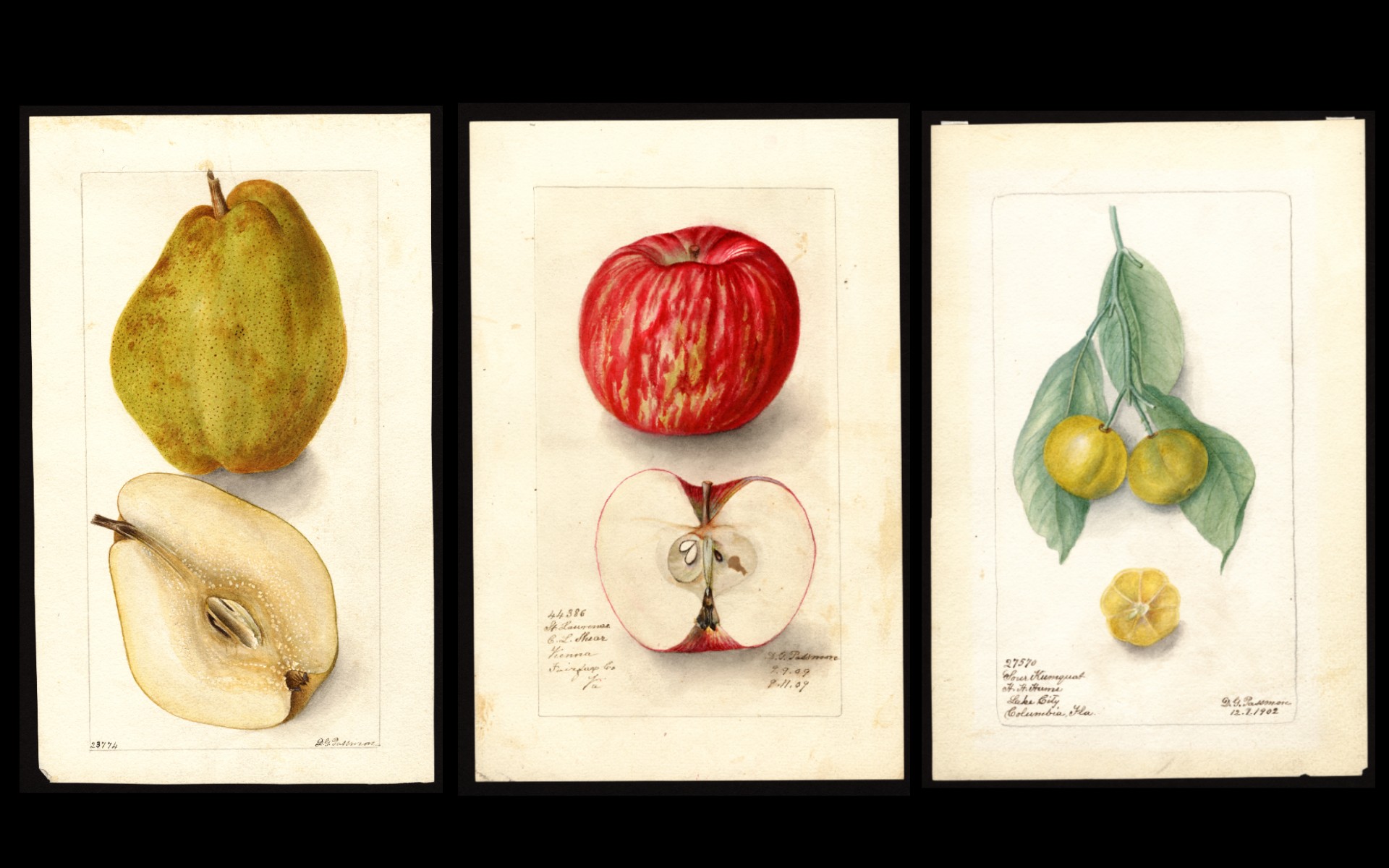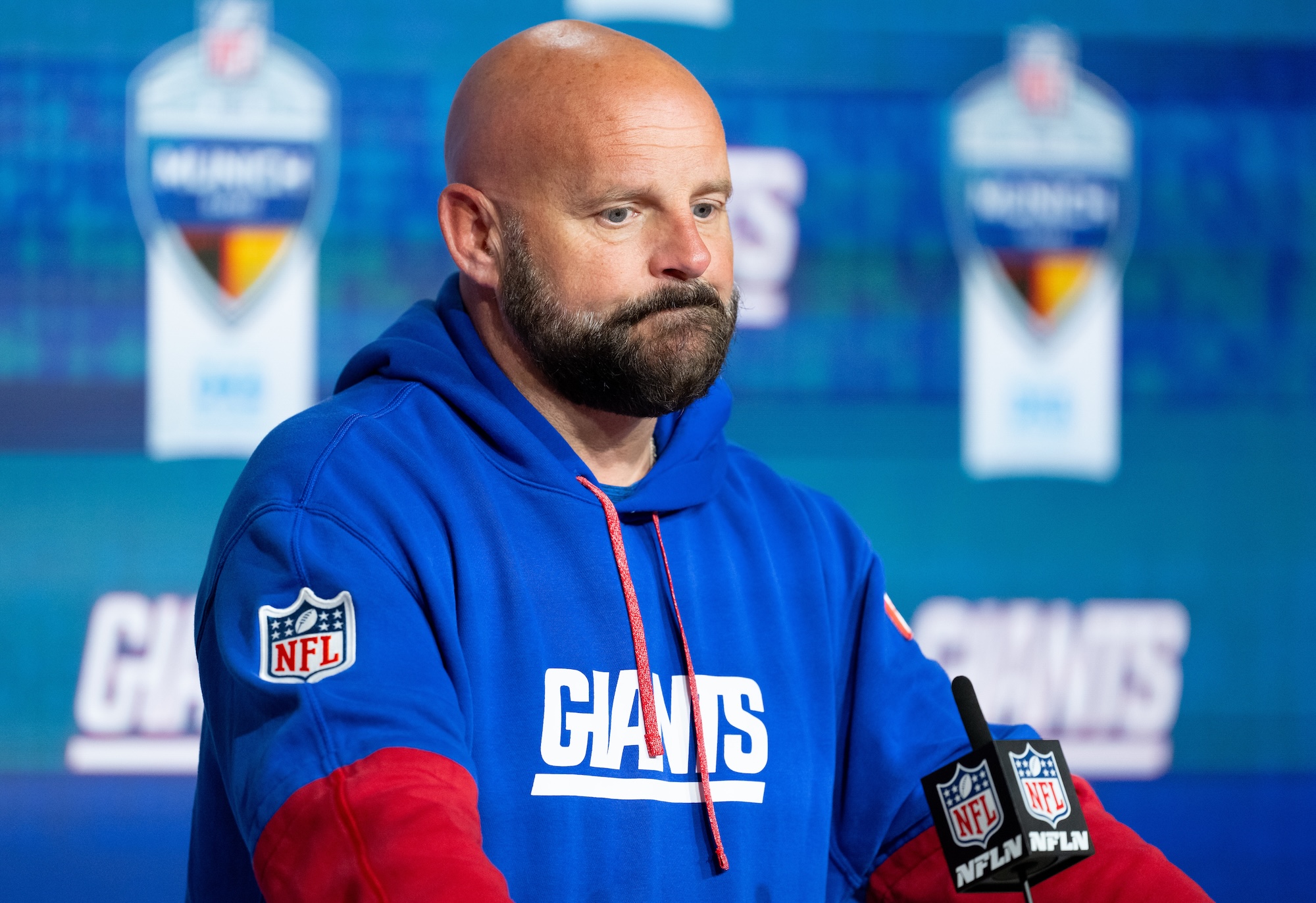Hockey is a sport that demands concentration from its viewer. Unlike baseball and soccer, it moves very fast. Unlike football, you don't get ample warning and prep time before the critical plays happen. And unlike basketball, the object being shot and passed around is easy for your eyes to lose track of. Even the seasoned hockey fan has to really focus if they want to follow the puck and understand how attempts are created in real time, which is why it's so infuriating that the NHL's latest completely misguided introduction to game broadcasts does nothing but steal that focus away.
New to every NHL game on TV this year are digital ads saturating the boards. Since the league made the rink's perimeter something other than pure, solid white in the 1980s, the fans in the arena have seen the same ads as the ones watching on TV, but now, when the action is being shown on the main camera, each individual TV station has the power to digitally draw over the in-arena ads with their own, constantly shifting the messages that viewers see.
"Every game, every night. This is the new norm," threatened NHL Chief Business Officer Keith Wachtel at the start of the season.
The impact of this new tech has been infuriating in ways both big and small, all of which imply that this so-called innovation was rushed out to the public without proper testing or input from actual hockey fans. (Dan Bagley had a good, very technical thread on this last week.) The ads glitch out too much; there's a distractingly uncanny effect when the camera pans because they don't blur quite like they should; it's disorienting when the broadcast cuts to a closer angle and the background looks completely different; it looks super weird when the bench doors open; and the local-business ads on road-team broadcasts take you out of the immersion of being at the arena. But the overarching problem here is that these ads are another thing competing for your attention while you're trying to follow the puck.
Right on top of the action, closer than any other, slower game's own digital ads, there's animation and flashing letters and all sorts of annoying tricks that take your eye away from the little disc that's supposed to be the center of your concentration. Here's a collection of them, every one taken just from the third period on the Sportsnet broadcast of Oilers-Wild on Monday night.
Sometimes it's obvious that these ads just aren't working like they should, like in these very choppy few seconds that make it basically impossible to follow the path of the shot on goal.
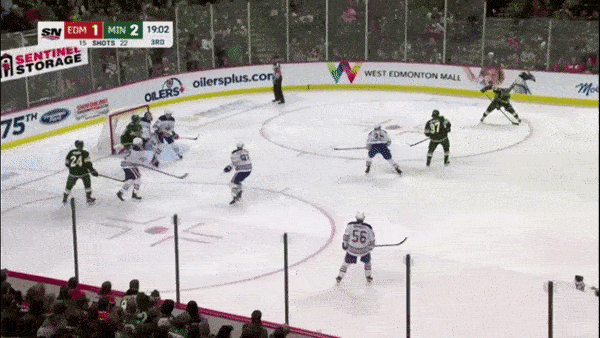
But just as awful, if not worse, are the times when these ads work as the league intended them to. Most obnoxiously, there's actual movement happening on the boards now, which may as well reach out, grab your head, and tilt it somewhere other than where the puck is. I don't think anyone can resist glancing away from the important stuff to take note of the boards here, which I suppose is a selling point for businesses but a channel-changer for anyone normal.
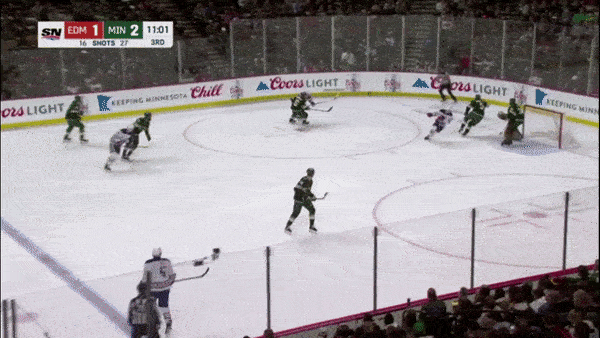
And even without glitches or animation, there's still a big problem. The basic process of changing one ad to another is more noticeable than what's happening in the game. The bouncing puck on this rebound, compared to the boards, is like a fly at a fireworks show.
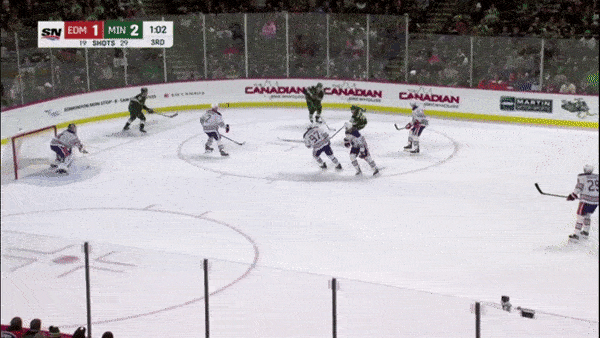
I can usually go a little while in a game without thinking about this despicable new tech, but once I notice it, the rotation of the ads quickly supersedes anything else. Just a few months into the season, I feel like I'm starting to reach my breaking point. I watch hockey to relax, but the effort that I expend fighting with the instincts of my own eyes to try and keep them on the flow of the game means that I'm starting to give more than I get. I don't think they're going away, though, because Gary Bettman's superhuman ability to bullshit his league's fans with a straight face remains as powerful as ever.
Bettman says that digital dasherboard ad backlash is a “non-issue” because their polling indicates fans find games more watchable with those digital ads replacing physical ones.
— Greg Wyshynski (@wyshynski) December 13, 2022
Even the much-despised glow puck, which turned games into live cartoons, was created with the goal of helping fans pay more attention to what was happening. The digital board ads, instead, smack of increasingly desperate, failing regional sports networks trying to squeeze every last dollar that they can out of their remaining customers, betting that their love for the game will force them to put up with the added inconvenience. But when I see these ads, I think about the contrast between the NHL and what people see when they turn on a couple of the fastest-growing sports in the U.S., soccer and F1. These broadcasts are so clean, with their ads so unobtrusive, that nothing about them ever pushes you away. For all the other reasons why they've seen an increase in popularity, I don't think it can be understated just how goddamn nice it can feel to watch an entire race, or a full 45-minute half, without ever feeling like your interest is being taken advantage of. Maybe the true market inefficiency is fewer ads, not new ones.
